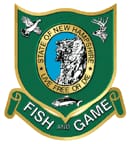Wildlife Habitat Improvements for New Hampshire’s Kearsarge Wildlife Management Area
OutdoorHub 10.05.12

The New Hampshire Fish and Game Department and the New Hampshire Division of Forests and Lands (NHDFL) report that a timber sale aimed at improving wildlife habitat is slated for the Kearsarge Wildlife Management Area (WMA). The operation, which could start as early as this month, will occur on 157 acres of the 1,000-acre WMA and will be supervised by NHDFL foresters.
The harvest will help to partially open the forest floor to more sunlight, allowing a new generation of trees to grow into a future forest, while significantly enhancing wildlife food and cover at the same time. It will also provide more room for the remaining trees to grow, not only adding to their future economic value, but also improving their capacity to produce acorns and other types of hard mast that are an important food source for many species.
This project will also create six 1-8 acre patches of young forest habitat – a habitat type that is declining, but provides life sustaining homes for at least 70 different kinds of birds, mammals, reptiles and insects throughout the Northeast.
“When you remove all of the trees in an area, lots of sunlight hits the ground, which causes stumps to sprout vigorously,” says Jim Oehler, State Lands Habitat Biologist for Fish and Game. “The dense growth that results is very important for a lot of wildlife.”
Some other expected wildlife benefits of the planned harvest include:
- Prey opportunities for bobcat, goshawk and other raptors.
- Improved nesting and foraging for eastern towhee, wild turkey, Canada warbler, wood thrush, American woodcock and ruffed grouse.
- Enhanced soft mast production (e.g., raspberries and blackberries) that will help prepare Canada warblers, wood thrush, veery, and other songbirds for fall migration, and provide an important food source for bears pre-hibernation.
- Improved woody browse and cover for white-tailed deer and moose to help them through the winter.
“We used to rely on Mother Nature to create patches of young forest through flooding and beaver damming,” says Oehler. “Today forest management is used to mimic these natural processes, which are largely curtailed to protect our roads, homes, and businesses.”
“This project is a culmination of a lengthy state lands planning process that ensures that we are providing a net benefit to wildlife and the public without causing harm to other important public resources such as rare plants and historic features,” says Tom Natale, the NHDFL forester overseeing this project. This process includes collecting data on the type, condition, and number of trees in the project area; identifying and mapping streams and wetlands and cultural features such as stone walls; developing a prescription; drawing up a formal project plan; obtaining plan review from sister agencies in charge of conserving rare species, cultural features, and wetlands; and public notification.
The habitat enhancements that will result from this project will also improve both wildlife viewing and hunting opportunities. In addition to these benefits, this harvest is projected to generate $1.1 million in economic activity based on estimates provided by the University of New Hampshire – Cooperative Extension. This economic activity comes in the way of employment (loggers, mill workers, carpenters, retail sales, etc.), product sales, and re-manufacturing value added products (homes, furniture, etc.).
For more information on the Kearsarge WMA visit: http://www.wildnh.com/Wildlife/WMAs/WMA_Kearsarge.htm
For more information on the benefits of young forest habitat visit: http://www.youngforest.org

